Home › Forums › The American Revolution › Robert Brown – Militiaman from Kingsbridge
- This topic has 4 replies, 3 voices, and was last updated 3 years, 5 months ago by
 ndembowski.
ndembowski.
-
AuthorPosts
-
-
April 13, 2019 at 2:50 pm #948
After the fighting of the American Revolution began, residents of the Kingsbridge area formed the South Yonkers Company of the Westchester County Militia. I’ve always been fascinated by the names on the militia roll. Since they were largely common people, there is not a lot of information about them available. But sometimes the few facts that can be found are enough to make you extremely curious about their lives.
Not having a very unusual name, I did not expect to find information on the “Robert Brown” from the list. Other than the militia roll, his name appeared on only one other document–an affidavit that he signed along with some of the other men of the militia. So, unlike some of the other militiamen, Robert Brown could write his own name.
But it turns out Robert Brown was not a common name in Westchester. There were plenty of Browns in the area but no other Robert Browns at this time (that I could find). So when I found a reference to a child named Robert Brown living in Kingsbridge in 1752, I knew I had the same person. The reference comes courtesy of the will of Leonard Brown, which reads: “It is my real will and I do order that my two molatto children Robert and Mary shall be free and I do by these my last will and testament make my two children absolutely free for ever.”
Leonard Brown was a farmer living just west of West 242nd Street and Broadway, perhaps in the area of the Manhattan College dorms. Neither he nor his wife, Catharine, were Black. So, how did he end up with his two mixed-race children, Robert and Mary? In his will he instructs the entirety of his estate including “my negro wench and her two negro children to be sold . . . either at publick vendue or private sale.” Perhaps this enslaved Black woman was the mother of Robert and Mary–although it is hard to fathom him referring to the mother of his children as a “wench.”
Leonard Brown’s will instructs that his son Robert was to be raised by his friend, Charles Warner, who was given 20 pounds for “bringing the boy up.” With his father dead and his possible mother and siblings sold off, Robert grew up on the Warner farm, which was located in today’s Van Cortlandt Park just east of Broadway between W. 260th and W. 261st Streets. Charles Warner had several children of his own in addition to 10 enslaved Black people that worked the on the Warner farm. Leonard Brown instructed that his son “be put to any trade which he shall like the best.” The next record of Robert Brown is in his late 20’s or early 30’s when he enlists in the militia. To my knowledge he was the only free man of African descent in the area and the only person of color in the militia companies raised in today’s Bronx. In the South Yonkers Company of militia Robert served alongside Charles Warner’s son, William, and other members of the Brown family.
Robert Brown’s mixed-race sister, Mary, was to be raised by a close neighbor, Abigail Emmons, according to the instructions of Leonard Brown’s will. The Emmons farm was located near the boundary of today’s Van Cortlandt Park at Broadway near where Post Road intersects with Manhattan College Parkway. In addition to the Emmons family, there were also several enslaved Black people living on the farm.
It is hard to fathom growing up motherless and fatherless as mixed-race children in an area rife with slavery. I have not found any records for Robert and Mary Brown other than the ones that I referenced although I am still looking for information about them.
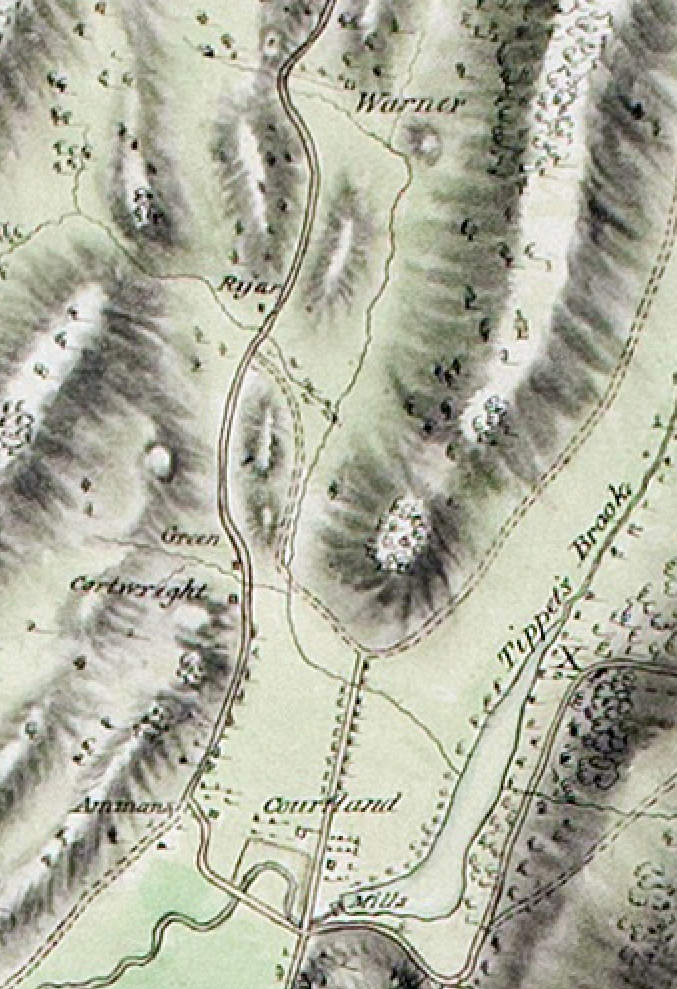
This 1781 British map depicts most of the households that I mentioned above. To get your bearings, the word “Courtland” labels the location of the Van Cortlandt House in the park. The hill just above is Vault Hill. To the left of the word “Courtland” is the word “Ammans.” This is the Emmons household where Mary Brown grew up after the death of her father and sale of her mother. Leonard Brown’s house would have been just to the west of the Emmons’ farm. If you follow the road to the north (the Albany Post Road), the Warner farm can be seen just to the east of the road.
-
April 14, 2019 at 7:49 pm #950
Interesting article, and good research making the connection between the names and documents and relating it to our area as so little is know of the personal life of early settlers.
Regarding the use of the word wench. Dictionary indicates it means as a NOUN (archaic) -a girl or young woman.
synonyms: young woman · young lady · miss · lass · lassie · colleen · [more]So taking it in the context of the times might not sound as bad as we think of it today. Still the sad truth this woman was his slave. The interesting piece is that Robert Brown assumed the responsibility and welfare of his children in his will. We still have much to learn about the relationship of owners and slaves. I’d be interested in what Mrs.. Brown felt about his having 2 children and not by her?
-
April 14, 2019 at 9:39 pm #951
I have a lot of questions about this situation as well but I don’t think there are answers. But he did give custody of his mixed-race children to his neighbors, as opposed to his wife, so I think that might answer your question as to how she felt about the kids. It really is impossible to know.
Another really interesting name on the militia roll is Anthony Allaire. The South Yonkers Company of militia (that included men from Kingsbridge) was organized after the battles of Lexington and Concord. You would assume that the militia was composed of Patriots but at that time the national politics had not yet taken shape as “Patriots” versus “Loyalists.” Anthony Allaire would be best known as fighting for the British later in the war. In 1780 he was a loyalist soldier in the south and kept a detailed journal, which is treasured by historians of that theater of the war:
https://www.tngenweb.org/revwar/kingsmountain/allaire.html
It is wild to think that his military career started in Kingsbridge in the Patriot militia but ended as a prisoner of the Patriots in South Carolina. Like many local loyalists he wound up living in Canada after the war.
-
April 27, 2019 at 10:50 pm #952
I think the amazing thing is how the will can circumvent the law in those days. He can just will someone free. It would be nice to wield that kind of power today. Maybe this great individual power is what led the founding fathers to for Congress.
-
November 9, 2020 at 8:47 pm #1710
I found some additional information about Robert Brown, the multiracial free militiaman from Kingsbridge. Some of this might be “too much information” for everyone but I have learned that a lot of people come to this site for genealogical reasons so I am posting what I found in case anyone out there is searching for it.
First of all, I am happy to report that Robert seems to have survived the Revolutionary War and continued living in our area through at least 1790. For some reason, I never noticed the last page of the 1790 census but there he is: “Free Robert.” He is listed under the category “all other free persons,” which was the category for free Black people. Robert’s household was the only one in Yonkers composed entirely of free Black people (although there were free Black people living in racially mixed households):
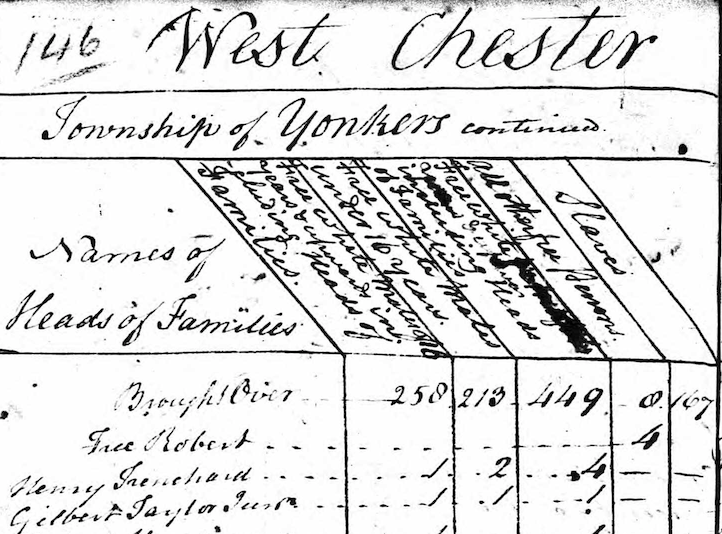
It would be interesting to find out if he ever applied for veteran’s benefits due to his service in the militia.
Also, by chance, I think I figured out where he grew up. I revisited an undated and unlabeled map from the Revolution that I never really paid much attention to. It is held in the University of Michigan’s Clements Library and you can check it out here. Once you get your bearings, you will see that the cartographer never completed this map and, unfortunately, he left large parts of the Kingsbridge area empty. And that’s too bad because this map was an attempt to represent the area to a high level of detail that other maps do not show. But despite its semi-completed state, the map maker did at least sketch out the area in light pencil, which you can see if you really zoom in. Below is Van Cortlandt Park in the vicinity of the Van Cortlandt House Museum:
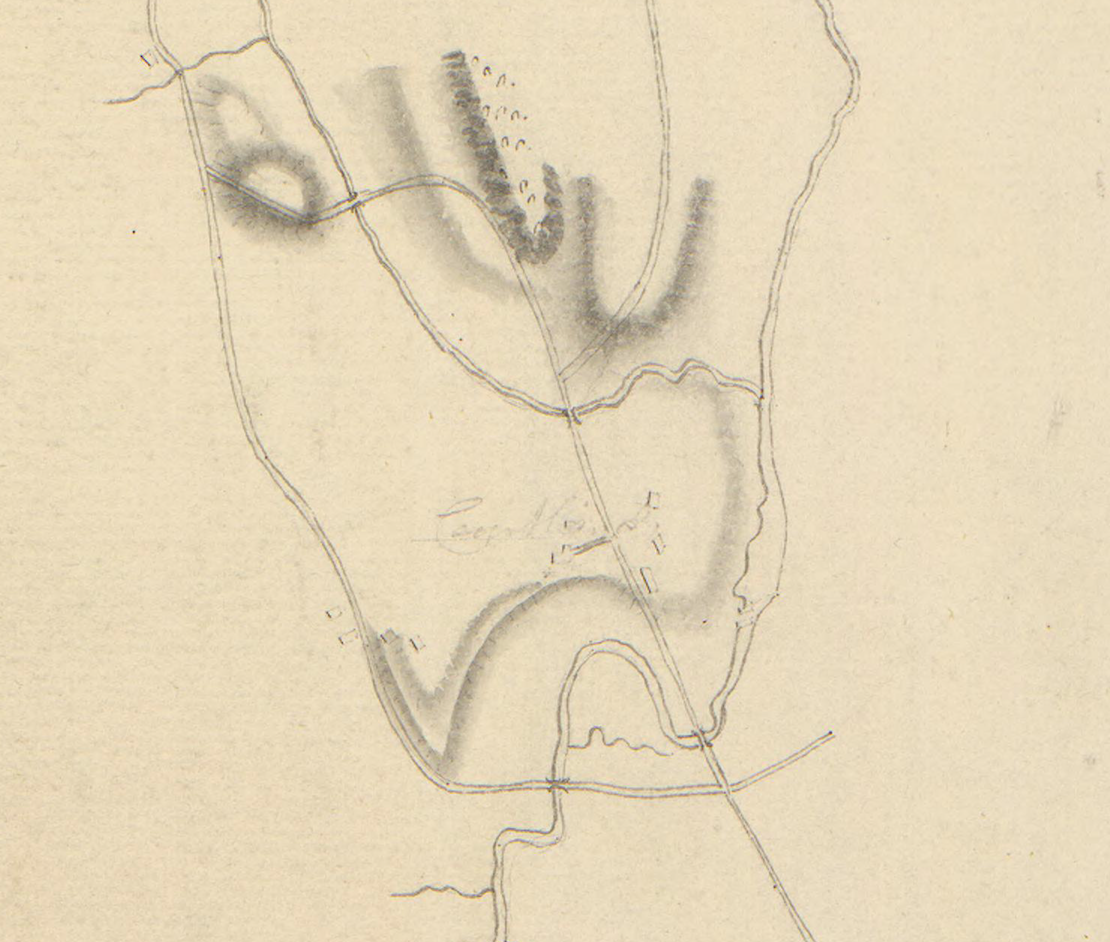
Here I have labeled some of the features:
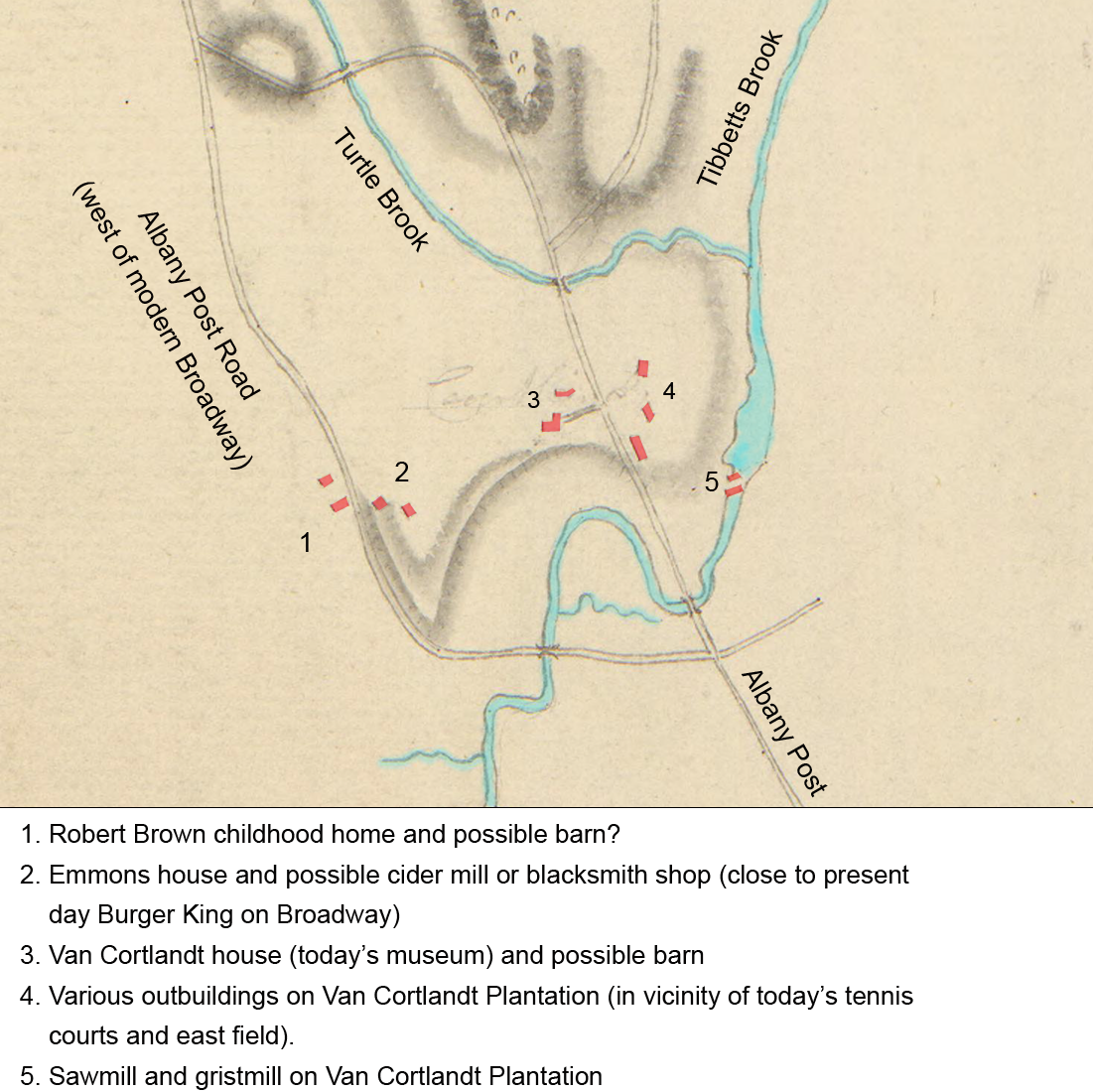
The place where I think Robert Brown grew up (location 1 above) is on the Albany Post Road west of the homesite of Abraham and Abigail Emmons. There is a segment of roadway there (behind the Burger King) that is still called “Post Road:”
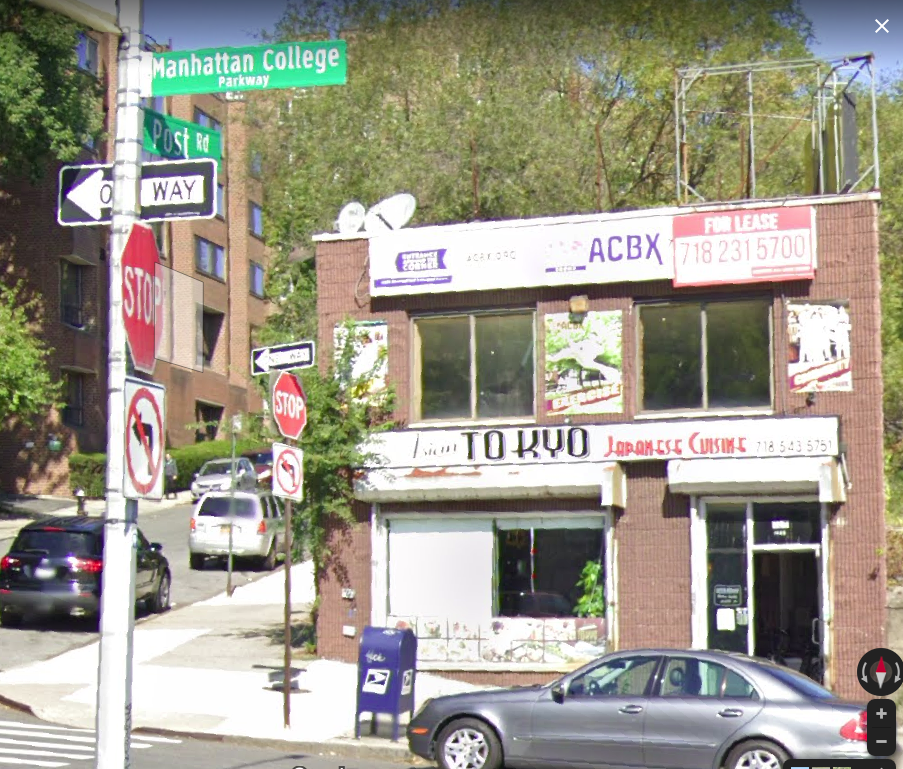
Post Road goes north up the hill (on the left in the above photo) and it ends where it meets the Horace Mann school campus.
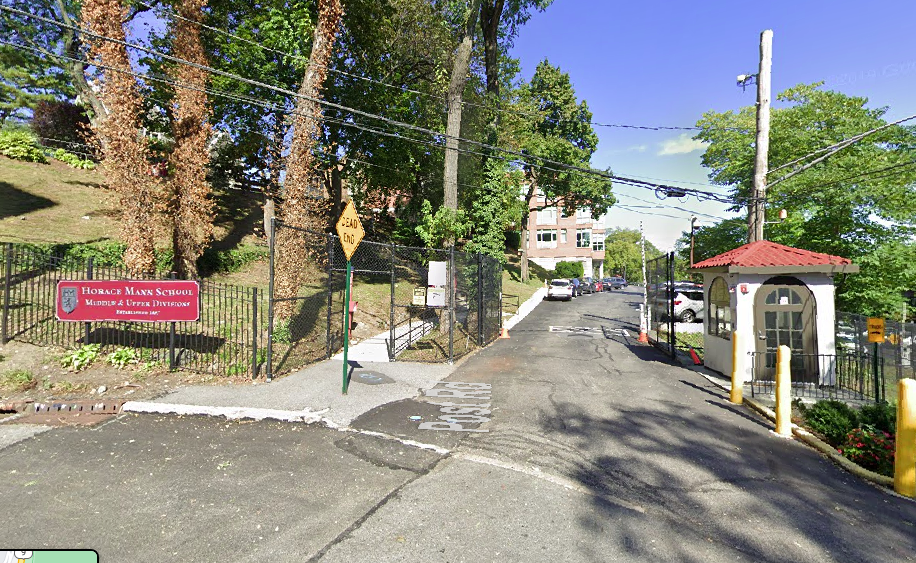 But historically, the Albany Post Road continued past that security booth and headed north toward Yonkers and onto Albany. It is in this area that the Revolutionary War map depicts two buildings where I believe Leonard Brown had his farm.
But historically, the Albany Post Road continued past that security booth and headed north toward Yonkers and onto Albany. It is in this area that the Revolutionary War map depicts two buildings where I believe Leonard Brown had his farm.How do I know? From the will of Abraham Emmons, which refers to “twenty acres of land to the westward of the [Emmons] home lott being part of that Lott of Land on the Neck that Leonard Browne lives on.” The Emmons and Brown families seemed connected in some unknown way because when Leonard Brown died, he left his “Mulatto daughter” Mary in the care of Abigail Emmons.
This land eventually became the property of Garrett Garrison. This is also the location shown in the below photo depicting the old Mosholu schoolhouse (1927 photo):
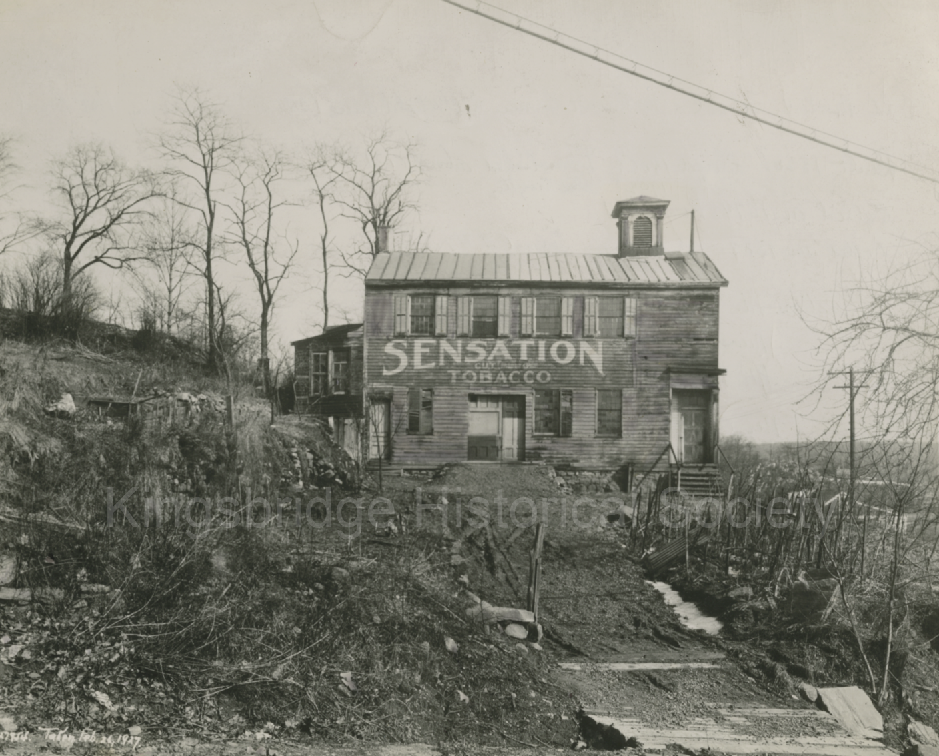
I wonder if this old school school house had a previous life as a farm building.
-
-
AuthorPosts
- You must be logged in to reply to this topic.